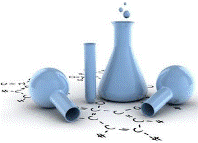Chemical and Biomolecular Engineering, Department of
Date of this Version
2007
Document Type
Article
Citation
Tissue Eng. 2007 August ; 13(8): 2105–2117.
Abstract
This article demonstrates that the micro-topography of the surface with respect to the pattern size and pitch influences cell adhesion and proliferation. Extensive research has shown the dependence of cell proliferation on substrate chemistry, but the influence of substrate topography on cell attachment has only recently been appreciated. To evaluate the effect of substrate physical properties (i.e., periodic microstructures) on cell attachment and morphology, we compared the response of several cell types (fibroblasts, HeLa, and primary hepatocytes) cultured on various polydimethylsiloxane (PDMS) patterns. PDMS has been used as an artificial construct to mimic biological structures. Although PDMS is widely used in biomedical applications, membrane technology, and microlithography, it is difficult to maintain cells on PDMS for long periods, and the polymer has proved to be a relatively inefficient substrate for cell adhesion. To improve adhesion, we built polyelectrolyte multilayers (PEMs) on PDMS surfaces to increase surface wettability, thereby improving attachment and spreading of the cells. Micrographs demonstrate the cellular response to physical parameters, such as pattern size and pitch, and suggest that surface topography, in part, regulates cell adhesion and proliferation. Therefore, varying the surface topography may provide a method to influence cell attachment and proliferation for tissueengineering applications.



Comments
© Mary Ann Liebert, Inc. Used by permission.